Researching the agriculture of the future, together with citizens. Not a mock-up situation in the lab, but directly in real life, in the polder. Polderlab Vrouwe Venne is a unique experiment in both research and education. Who are these researchers, and how does it work?
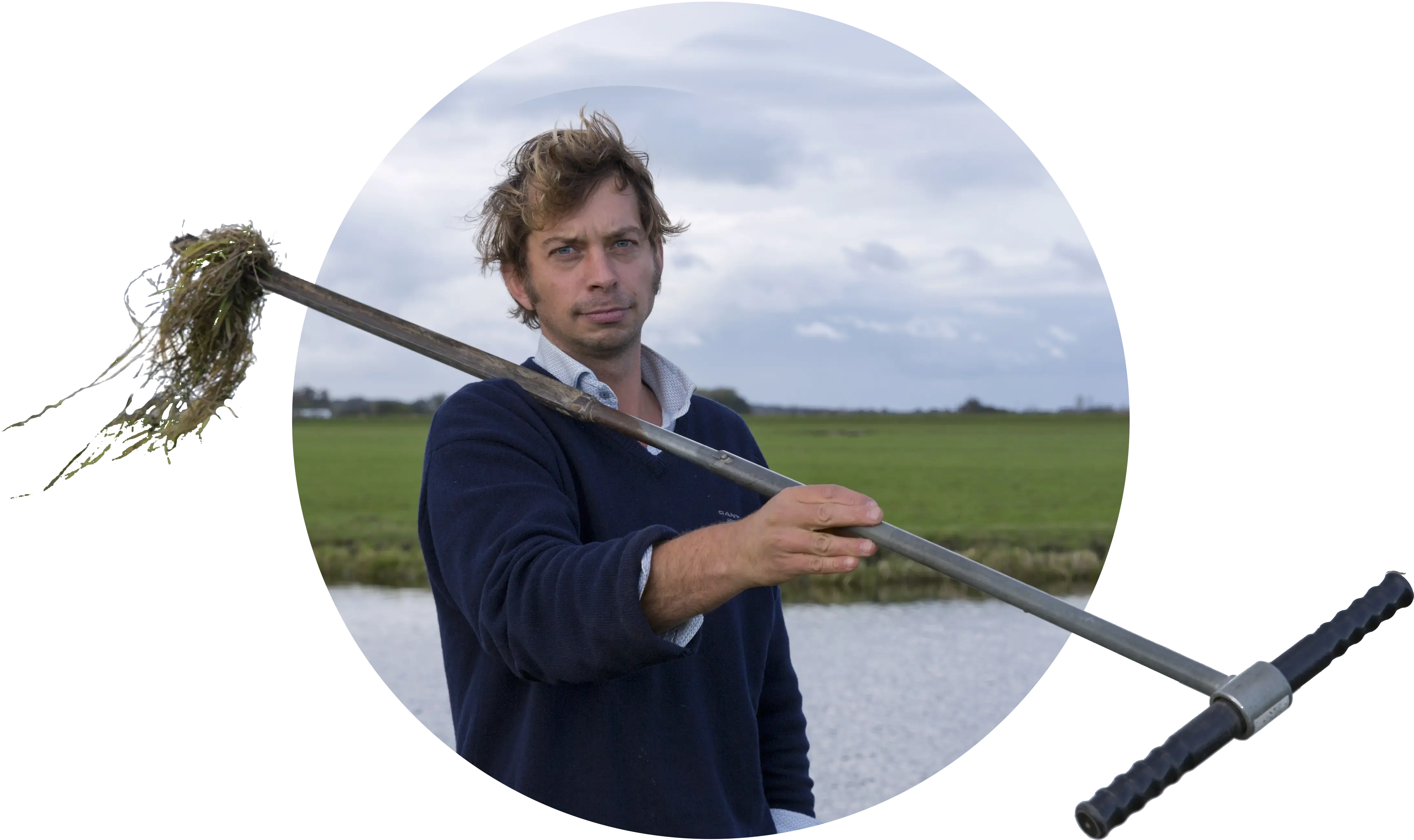
Ecologist Maarten Schrama is one of the instigators of the polderlab. Maarten is project leader of research in the polder and teaches there. Passionate as he is, he often talks about his favourite project in the media.
‘The Vrouwe Vennepolder is an incredibly beautiful, typical peatland polder. The fact that we are doing this together with citizens and farmers is very special. It gives us a unique research ecosystem in the middle of the Dutch landscape. A place like the polderlab is indispensable if we want to take bold steps!’
Meanwhile, Maarten also knows the risks of the polder: ‘I have drowned several phones in the ditches of the polderlab in recent years.’
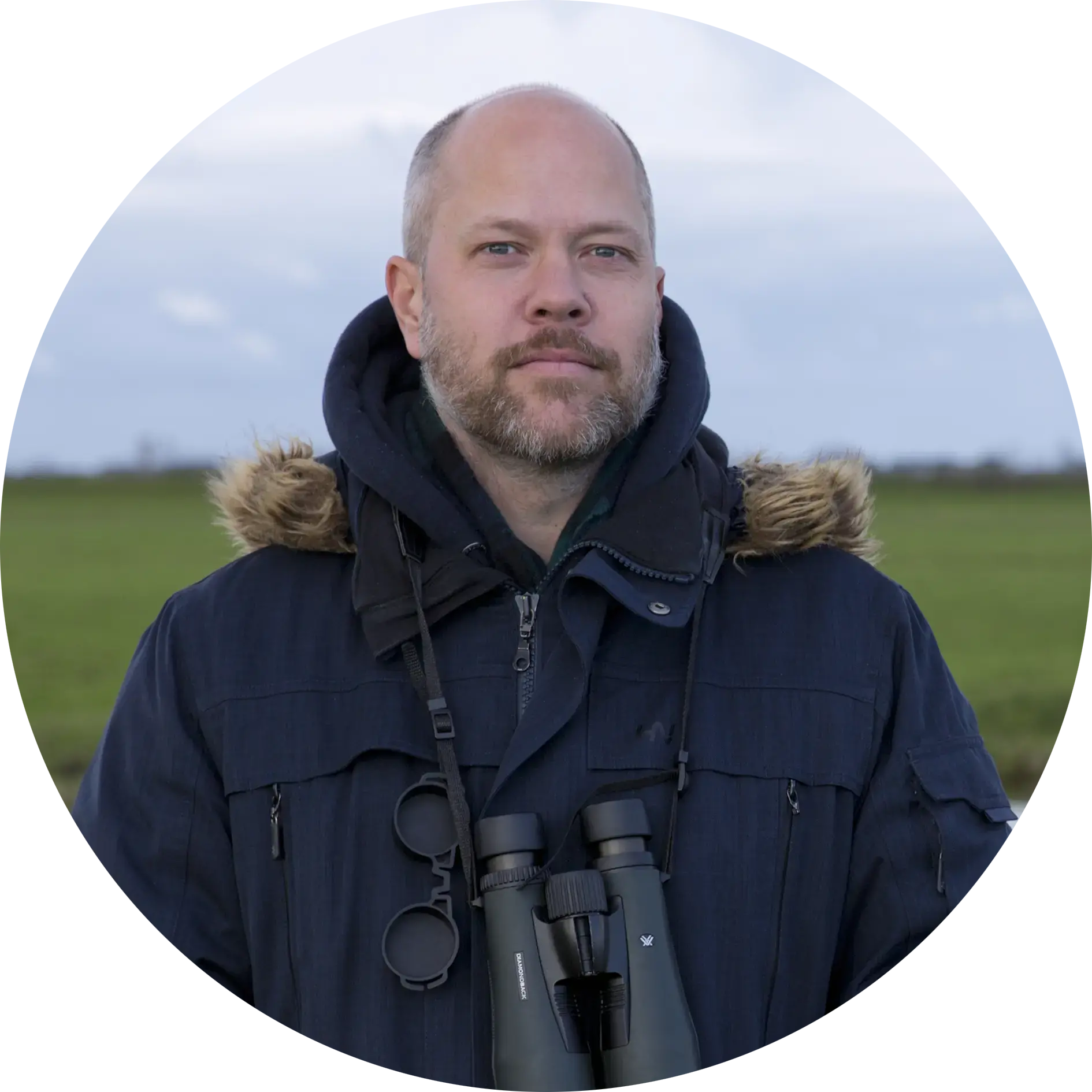
Biologist and ecologist Krijn Trimbos has been involved in research at the polderlab from the beginning. Krijn teaches about field research and collects data together with the students.
Krijn is extremely happy with the cooperation in the polderlab. ‘The polderlab brings different parties together. This allows us to come up with solutions together for food issues and problems in agriculture.’
And that is sorely needed. Agriculture is facing considerable challenges, such as soil subsidence, salinisation, greenhouse gas emissions and biodiversity loss. Krijn likes to focus on solutions: ‘This research gives me hope for the future. If we join forces, together we can shape this agriculture of the future.’
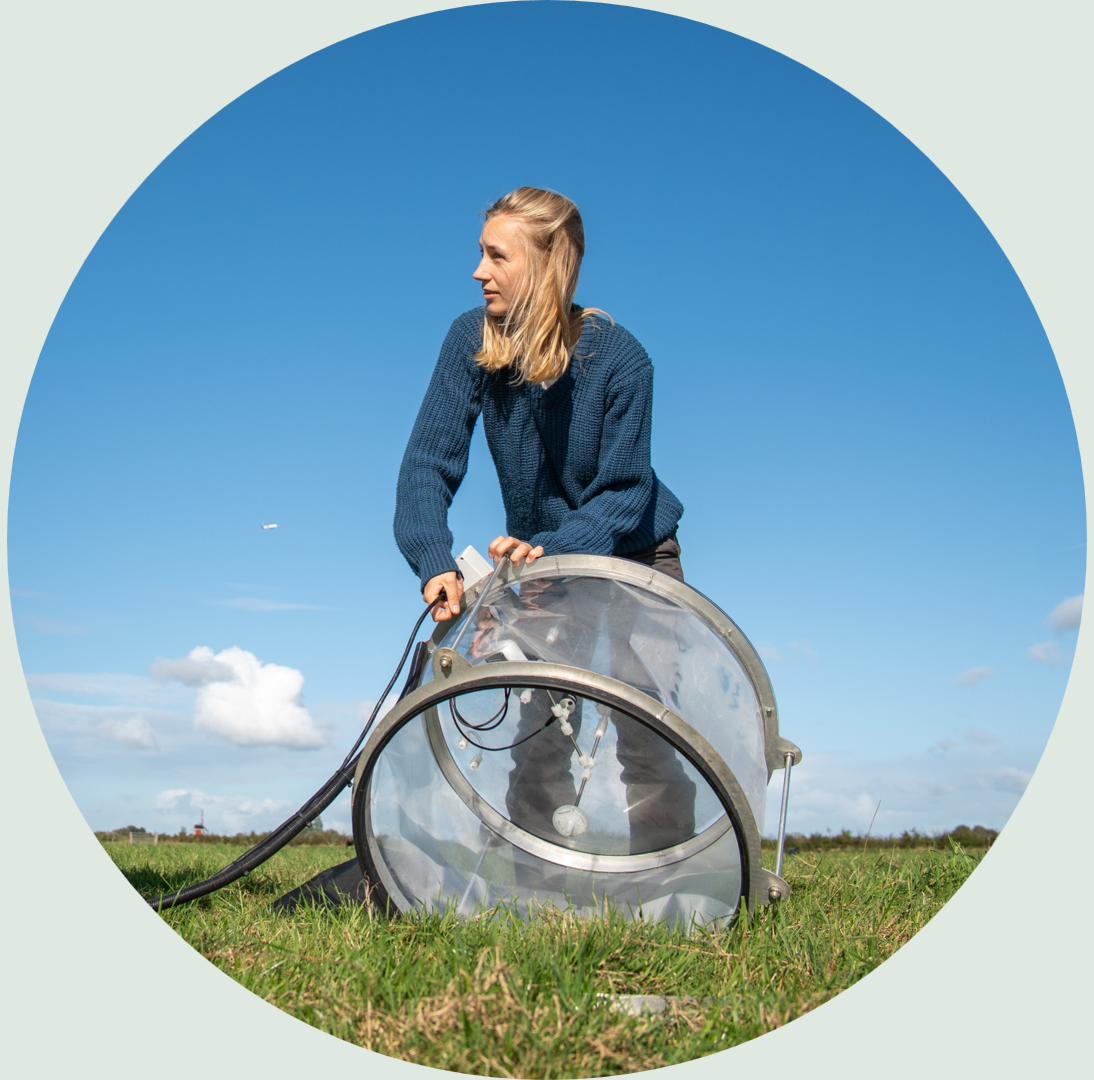
Fleur van Duin is a PhD candidate at the Institute of Environmental Sciences (CML) and Naturalis Biodiversity Center. She studies the environmental impact of various measures and crops in the polderlab.
'We set up large field experiments to monitor impacts on biodiversity and greenhouse gas emissions extensively. This way we gain insight into how we could potentially redesign the polder landscape more sustainably.'
The studied interventions range from minor adjustments of field edges to full-field alternative cropping systems, but always assume an agricultural function. 'I believe that agriculture and nature can reinforce each other.'
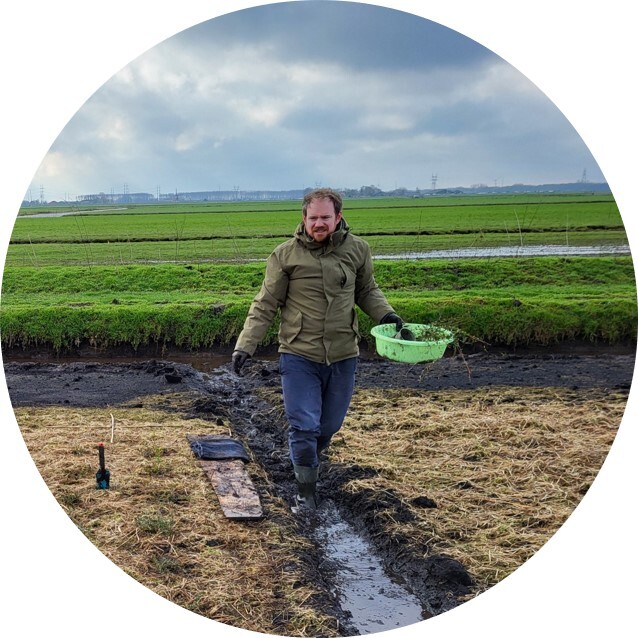
Research sociologist Thomas Franssen became involved with the polderlab in 2023. Thomas conducts research into the role of scientists in society and follows ecologists in their research practices.
For Thomas, the polderlab is an ideal testing ground. 'Because the polderlab brings together various parties who all want to develop solutions for issues in agriculture, scientists are required to work completely differently from how their colleagues usually expect them to.'
We are increasingly looking to science for new solutions to societal problems such as biodiversity loss and soil subsidence. The polderlab shows that scientists do not come up wiht new solutions alone, but in collaboration with farmers and citizens. Thomas will see how the solutions from the polderlab are taken up by politicians, policymakers and farmers in other areas; 'What role can the polderlab play in the transition of agriculture and does it do that? That's what I'll be following.'
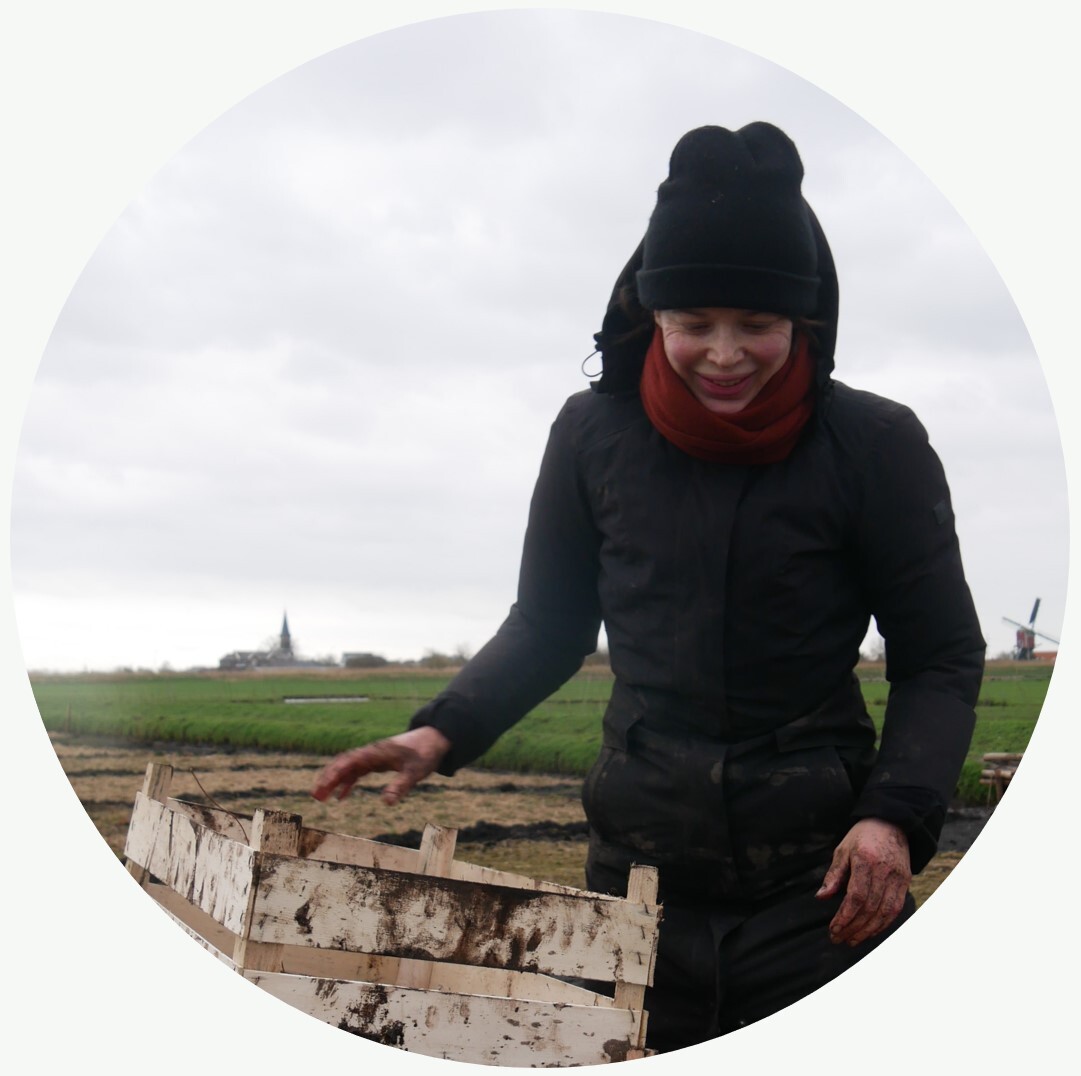
Anthropologist Mandy de Wilde has been doing fieldwork in and around the polder lab since 2023. Mandy conducts research into changing agricultural practices and how these will take shape in the Dutch cultural landscape of the future.
Polderlab is part of a polder landscape with meadows, cows and ditches: “‘Typical Dutch”, you often hear. People usually mean the landscape. But indirectly this also shows that we have come to think of it as normal, this form of livestock farming.' But less livestock farming is needed to tackle the climate and biodiversity crisis. In the polderlab, the farmers are therefore experimenting with wet soil crops. Think of crops like cranberry, crab shavings and even rice. Mandy is going to see how that works in the recommended years farming practice: 'What knowledge, skills and chains do you need as a farmer to grow these crops in the polder in a profitable way?' But not only that: 'What does such a wet cultural landscape look like? What animals and plants live there? And how are 'we' going feel at home?'
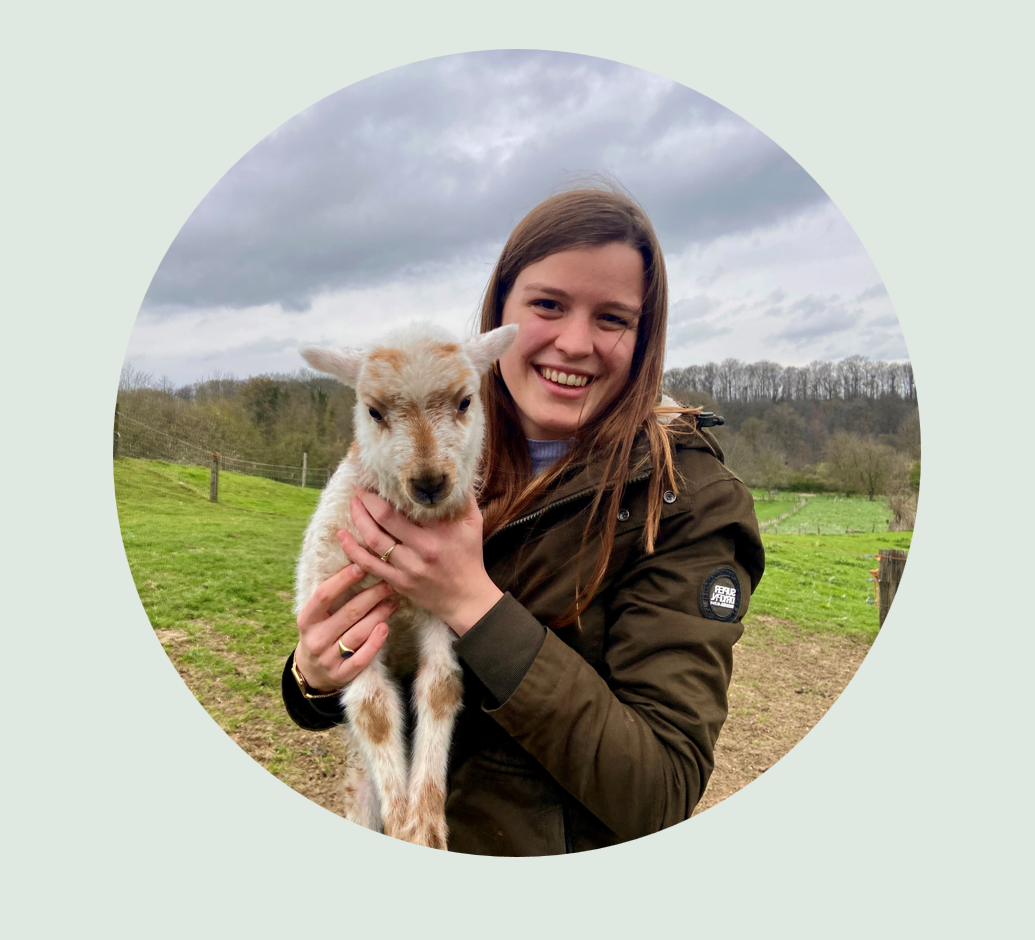
Martijne Kannekens is a PhD candidate at the Institute of Environmental Sciences and investigates sustainable rice cultivation in Northwestern Europe. The goal is to find out if rice can be a solution to the environmental problems associated with conventional agricultural land use on peat soils.
At the polderlab, she studies the impact of rice cultivation on greenhouse gas emissions and biodiversity.
'So far the results look promising, but we want to know for sure whether this unusual type of agriculture really is more sustainable before we implement it on a large scale. The polderlab offers the perfect opportunity to see how rice cultivation affects the environment.'
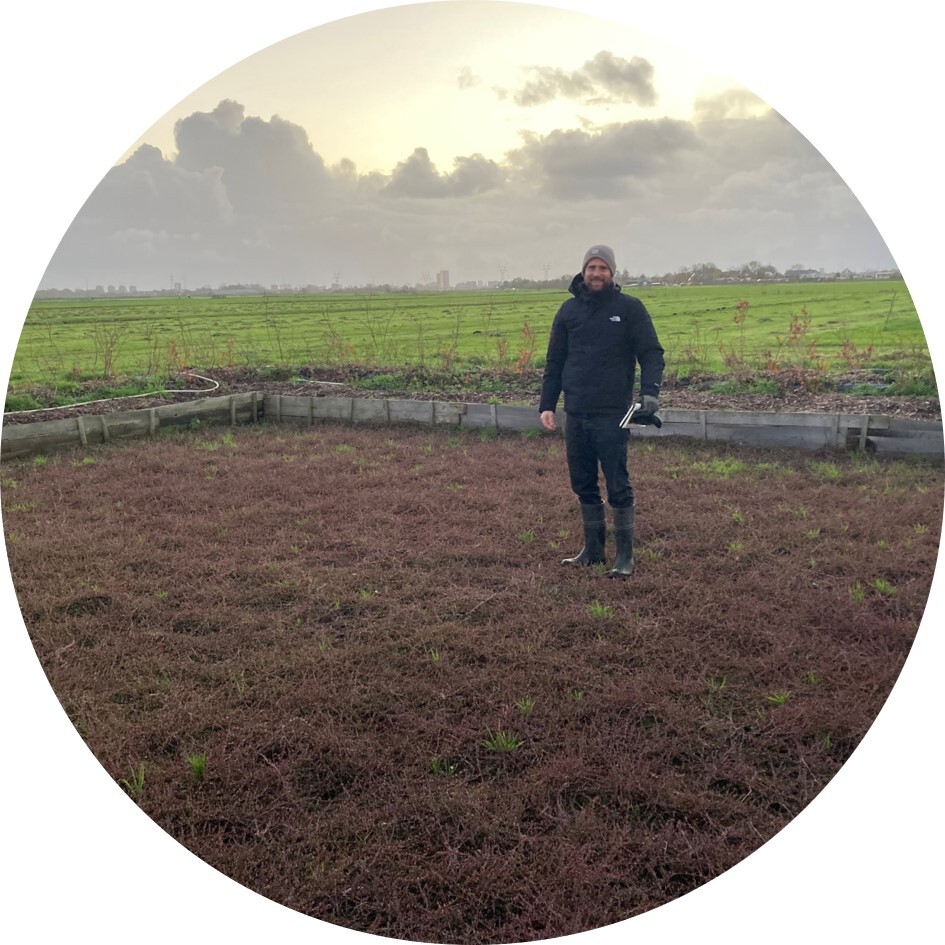
Pieter Lagerwaard is a political scientist and works as a lecturer at the interdisciplinary bachelor's degree in Politics, Psychology, Law and Economics (PPLE) at the University of Amsterdam (UvA). His research focuses on citizen initiatives and agricultural experiments that aim to develop sustainable, biodiverse, and scalable food systems.
He is interested in the dilemmas, challenges and possibilities of the polderlab. 'I am interested in the social importance of the experiments, the biotechnological solutions that are being developed, and how these can be scaled up.'
Pieter has been involved with Polderlab Vrouw Venne from the start, as a volunteer with the Land van Ons plot team. 'I think this initiative is very important, because the polderlab could serve as a proxy to address major social challenges. I am very curious to see how things will develop in the coming years.'